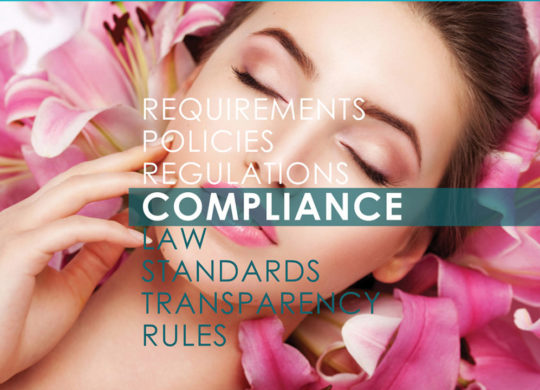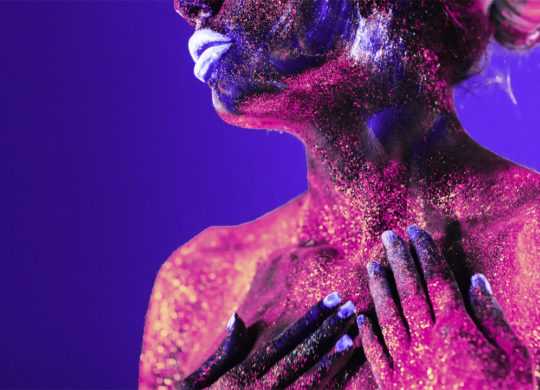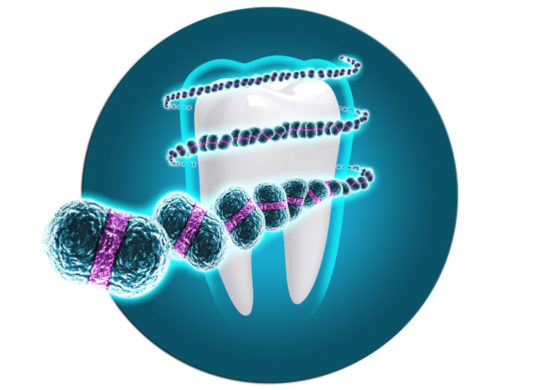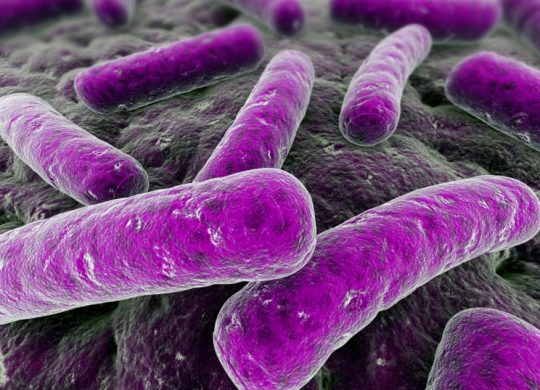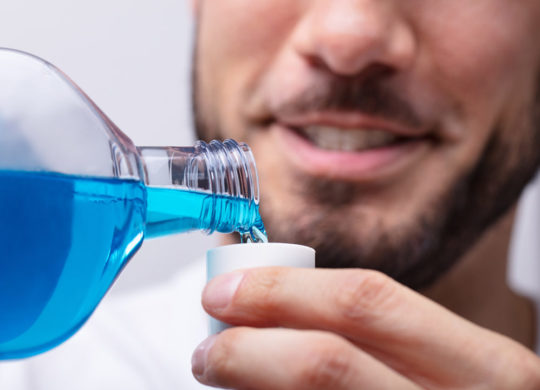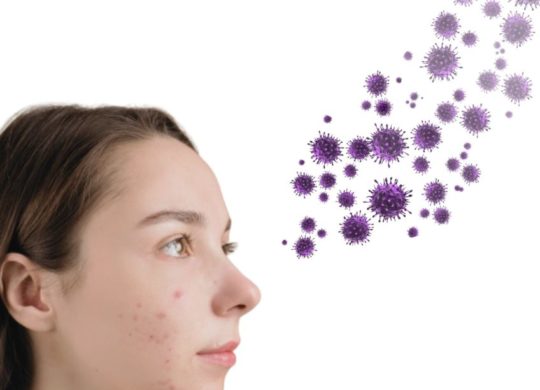The gentle power of the skin microbiota
One of the biggest concerns in the personal care is how to formulate for the sensitive skin. This is because the number of allergies and skin reactions in sensitive skin is significantly rising. Moreover, the consumer became extremely demanding and cannot accept any mistake from any cosmetic brand anymore.
Brands are nevertheless doing their best to respect the human skin. They use mild emulsifiers; safe preservatives and they are limiting perfume. But even then, they still can face some complaints from the consumer. In order to formulate bullet proof cosmetics, brands need to do extra efforts to go to the next level of skin mildness and enter the unexplored area which is the skin microbiota.
For the microorganisms the skin is their sole source of food. The skin provides them with:
- Dead skin cells (corneocytes)
- Sebum
- Oxidized lipids
- Sweat
For decades cosmetic products have been focused on the human part of the skin. It was assumed that the skin, our outermost organ, is in direct contact with the environment. The outermost layer was believed to be the horny layer. This insight recently needed to be improved, as the skin cells on their turn are protected by a mysterious and fascinating layer of micro-organisms: the skin microbiota. The skin microbiota is known as the microbial layer that is in contact with the fickle and hostile environment.
The skin and the skin microbiota are not separated layers. As a matter of fact, both layers work together and are intertwined. They thrive in a kind of successful marriage. Both layers need each other and help each other. Together they are one. They form one gigantic impregnable barrier against the environment and all its threats.
In return the skin microbiota gives a lot of benefits. Indeed, the food that the skin supplies is actually just the garbage of the skin, which is excreted and peeled off. However, by eating the skin waste, the skin microbiota actually cleans it away. Therefore, the skin microbiota keeps our skin clean.
But the skin microbiota’s activity goes far beyond cleaning, as it transforms the skin garbage into precious substances such as:
- Antimicrobial peptides protecting the skin from the invasion of pathogenic bacteria
- Organic acids avoiding the colonisation of voracious fungi
- Proteins regulating our inflammation process during UV exposure. Consequently, limiting sun damage
- 6-HAP which is an efficient anti-cancer purine, both avoiding and curing skin cancer
- SOD, which is an antioxidant that goes beyond the efficiency of vitamin E, as it avoids the formation of free radicals
- Glycerine/proteins providing a hydration.
It turns out that the skin microbiota is more than merely a collection of different microorganisms. It is also a precious mixture of vital substances forming together a life essential elixir for the skin. The most noble task of the skin microbiota is that it takes away a lot of skin treats before they could attack the skin. Without the skin microbiota our human immune system would be overloaded.
The struggle for survival
The environment on the skin is unimaginably harsh for the skin microorganisms. The skin is a Chernobyl-like environment where carcinogenic UV rays are ruling. The microorganisms are endlessly resourceful, and they will invest in the production of sun protective carotenes and protective antioxidants.
Moreover, the skin is a hostile dessert without any water. The parts of the skin exposed to the environment are constantly flogged by drying winds, stealing away the last molecules of water. Because water is life essential, microorganisms need to use all their power to entrap each droplet of water by producing glycerine and biofilm proteins.
The skin microbiota can produce all these impressive substances, but to do so, they also need food, a lot of food. Unfortunately, the skin is not producing high quality food. Therefore, the resident members of the skin microbiota created an ingenious food network, where each piece of food is recycled and distributed amongst each other. No food is wasted. This food web amongst the resident skin microbiota members is represented in figure1.
Some staphylococci produce among other things lactates, which feed among others the cutibacteria. The cutibacteria on its turn produce out of the lactates, propionates and acetates, which feed among others the micrococci. The micrococci transform the latter into amino acids which feed all members of the skin microbiota. Through this web they keep one another alive and healthy.
The protective skin microbiota is facing additional challenges. In our modern society the skin and the skin microbiota are exposed to pollution. The excess free radicals, fine particles, heavy metals and solvents coming from aerial pollution require from the microorganisms even more energy and by consequence more and more appropriate food.
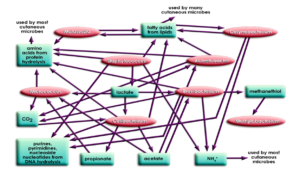
Figure 1: The skin microbiota food web.
The endless power of the skin microbiota is not so endless
The skin microbiota seems to have an endless power to overcome all these threats:
- Lack of powerful food
- UV exposure
- Lack of water on the skin
- Pollution
- Harmful cosmetic ingredients
and to bounce back time after time. We do not even notice that we have a skin microbiota watching over us. We take for granted that the skin microbiota is bullet proof. But sometimes the skin microbiota does not recover completely. When that happens, the skin is not completely protected anymore. An unprotected skin is exposed and evolves towards different kind of skin problems:
- a sensitive skin
- itchy skin
- acne prone skin
- psoriasis
- eczema
- redness
- scaling skin
- dandruff
- mal odour
Classic cosmetic products
Classic cosmetic products are offer no support to the titanic work of the skin microbiota. On the contrary, with standard products we shower the skin microbiota with:
- Lethal preservatives
- Destructive alcohol (ethanol) that steals away all the food
- Disturbing surfactants and emulsifiers
- Dangerous essential oils and perfume compounds.
The next level of skin protection
As mentioned above, the classic cosmetic formulations are merely focussing on being mild for the human part of the skin. The effect a formula might have on microbial organisation is ignored. In order to develop safer and milder cosmetic formulation it is crucial to focus additionally on the skin microbiota. In personal care these 3 main strategies are being proposed:
- Skin microbiota mild
- Improving the microbial balance
- Increasing the microbiota diversity
Skin microbiota mild
Skin microbiota mild means that the formulation has:
- no adverse effect on the amount of microorganisms
- no influence on the abundance of each individual genus, specie and strain.
However, this is quite difficult to prove and to realize as cosmetics contain preservatives, surfactants, emulsifiers. Table 1 shows the maximum adverse impact these ingredients might have on the number of microorganism and how these ingredients disturb the delicate balance between the members. For example, preservatives can destroy up to 90% of our microbial protection within less than 1 hour. This means that it only takes 1 hour to expose the skin to the hostile environment.

Each single ingredient has a different influence on the skin microbiota. Microorganisms use enzymes to digest food. Each microorganism strain possesses different enzymes and consequently can eat different ingredients. An ingredient can be digested by the enzyme of a certain microorganism. Thus, the microorganism can grow and flourish thanks to that ingredient. However, an ingredient can also inhibit the enzyme of a certain microorganism. In that case the microorganism will be hindered and might fade away.
Table 2 demonstrates the influence of certain common cosmetic ingredients on the growth of each individual specie. Even innocent ingredients such as water influences the skin microbiota.
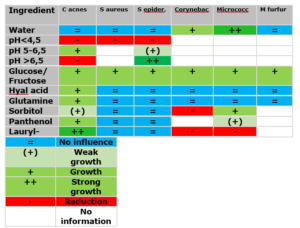
Table2: Influence of common cosmetic ingredients on the growth of skin microbiota species.
As demonstrated in table 2, each ingredient influences differently the members of the resident skin microbiota. The different influences are summarized in table 3.
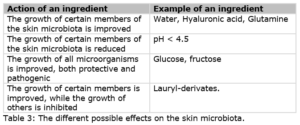
In summary trying to formulate skin microbiota mild is quite complex. Moreover, the present knowledge we possess on the skin microbiota and the effect of cosmetic ingredients on that skin microbiota is too limited.
Improving the skin microbiota balance
A second strategy is to support the skin microbiota by making it stronger. In other words, to make the balance between all the resident skin microbiota members stronger. The skin microbiota becomes like an unchangeable rock. No matter what happens with the environment, no matter what kind of cosmetic ingredient is used, the skin microbiota resist and continue performing its precious protective task.
Prebiotics do have this power. A prebiotic is food that will support the complete resident skin microbiota. A prebiotic is bio selective food as it can only be fermented by the protective skin microbiota and cannot be fermented by possible pathogenic microorganisms.
Inulin is such a powerful skin prebiotic. Inulin is a sugar polymer extracted by water only from:
- The roots of chicory
- The pinas from agave
This sugar is a polymer of one starting glucose molecule and several fructose molecules. The fructose molecules are connected in such a way that only a specific enzyme can disconnect them. In other words, a specific enzyme is needed to ferment, to eat inulin.
Inulin can be directly fermented by 3 valuable members of the protective skin microbiota and food web:
- Micrococci
- Brevibacteria
- Corynebacteria
Since they are all 3 members of the food web, Inulin feeds and supports the entire protective skin microbiota. Unwanted organisms are not supported by Inulin. Not directly, nor indirectly. With Inulin the skin becomes a better place to live for the skin microbiota, while the skin becomes a real hell for unwanted microorganisms.
The way Inulin supports the protective skin microbiota is demonstrated in figure 2.

Figure 2: The feeding of Inulin.
Biolin: An Inulin for Baby care
A special purified grade Inulin (Biolin) for baby care supports atopic babies in their struggle with redness and infections.
15 atopic babies suffering regularly from diaper rash (C albicans infection) were medically treated. When their skin was healthy and a baby cream containing Zinc oxide was used, they would sooner or later bounce back into a C albicans infection. However, when the same baby cream was enriched with 1.5% Biolin, the C albicans infection and diaper rash did not occur anymore.
Biolin strengthens the baby microbiota. Inulin gives the baby microbiota the power to fight against the colonisation of C albicans.
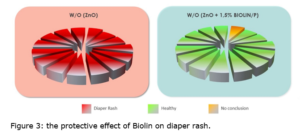
Biolin: An Inulin for Intimate care
A special purified grade Inulin (Biolin) for intimate care supports women in their daily struggle against intimate discomfort.
50 female patients suffering regularly from discomfort, irritation, C albicans and G vaginalis infections were medically treated. When their complaints disappeared and they started using daily an intimate wash, the symptoms of infection and irritation reappeared. However, when the same wash was enriched with 1.5% Biolin, the complaints didn’t reappear anymore.
Biolin strengthens the vaginal microbiota in its daily struggle with the hostile environment.
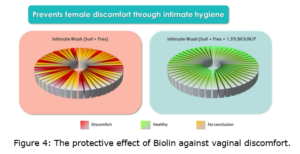
preBIULIN FOS: An Inulin to milder aggressive applications/sanitizers
A radical stress situation for the skin microbiota is the treatment of the skin with alcohol (ethanol). Alcohol can change the balance between the protective microbiota up to 63%. The skin protection is seriously weakened. When this aggressive alcohol is combined with 1% preBIULIN FOS, a highly soluble Inulin, the skin microbiota was only disturbed by 28%.
preBIULIN FOS strengthens the skin microbiota against invasive chemicals/disinfectants.
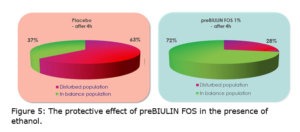
preBIULIN FOS: An Inulin to support antimicrobial activity
The purpose of using sanitizers is to eliminate dangerous microorganism. Not to eliminate our natural microbial protection.
Skin explants were contaminated with the pathogen S homininis. When the skin explants were treated with alcohol the S homininis was reduced. However, when the skin explants were treated with alcohol and preBIULIN FOS, the S homininis was killed 60% more efficiently. Inulin, being a natural polymer of glucose and fructose cannot exert any anti-microbial effects. The explanation for this observation lies in the fact that when alcohol is used alone, it kills all microorganisms: both pathogenic and protective. When Inulin is combined with the ethanol, the ethanol still kills, but the inulin helps to bounce back the protective skin microbiota only. When the protective skin microbiota feeds itself on inulin, it gains enough energy to produce anti-microbial peptides that are undoubtfully more efficient than ethanol. Inulin allows the protective skin microbiota to take over control again.
preBIULIN FOS perfects antimicrobial properties of sanitizers or other products with anti-microbial purposes.
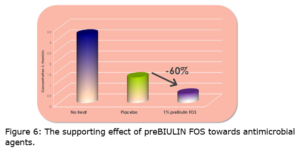
preBIULIN AGA: An Inulin to milder leave on products
A special distilled inulin from agave and chicory with an exceptional high molecular weight strengthens the skin microbiota and by consequence the skin against known and unknown disturbing ingredients.
To demonstrate this protection, the worst-case scenario was applied. A mixture of aggressive preservatives: phenoxyethanol + parabens + formaldehyde releaser. These preservatives can reduce the skin microbiota in 1 hour by 90%. Even after 4 hours this destructive effect is not repaired. It means that in 1 hour the microbial protection against the environment is seriously weakened. When these aggressive preservatives are combined with preBIULIN AGA, the skin microbiota becomes 5 times stronger and after 4 hours the entire skin microbiota is back on track.
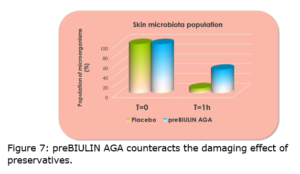
preBIULIN FOS: An Inulin to milder surfactants
Surfactants disturb the activity of microorganisms due to their chemical nature. A natural surfactant can disturb the microbial skin protection by more than 20%. The same surfactant combined with preBIULIN FOS is not disturbing the skin microbiota at all. Hence, shampoos and shower gels containing preBIULIN FOS are much milder for the skin microbiota and for the skin on the long term.
Increasing the diversity of the skin microbiota
One of the proposed strategies is to increase the number of different members of the skin microbiota. More different members might mean more diverse protection. It is indeed correct that when an infection occurs (dandruff, acne) the skin is dominated by only a few microorganisms. In case of an infection the diversity needs to be significantly increased.
However, when the skin is healthy, the diversity is healthy and aligned with one’s lifestyle. It would be a risk to change/increase the diversity that is in balance. There is no scientific proof that a higher diversity leads to a healthier skin. On the contrary a well hydrated skin has a lower microbial diversity, than a dry skin.
Conclusion
It is crucial to approach to cosmetic products as to a food source for the skin microbiota. Since our knowledge of the skin microbiota is too limited, it is a good strategy to make the skin microbiota stronger. It means to make it independent to the influence of ingredients. Prebiotics can do that in endless applications. Prebiotics are a powerful and efficient prevention of skin problems. A prebiotic such as Inulin is a valuable tool to maintain our skin beauty and an efficient weapon to keep unwanted organisms on a distance.
Contact US
GOBIOTICS BV
Jac Jansenweg 7
4631 SL Hoogerheide
The Netherlands
